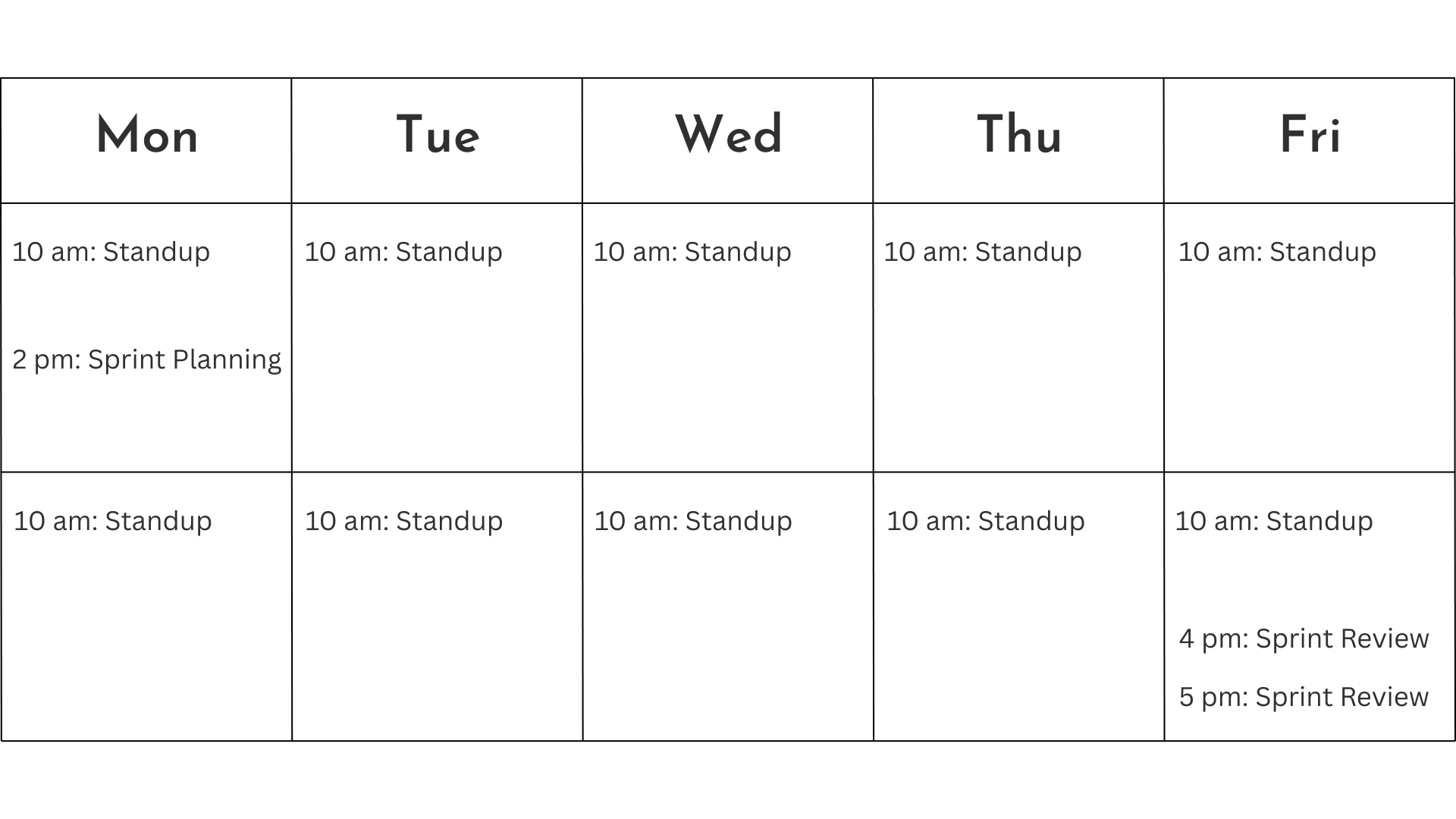Startup Software Delivery Kit
This kit will help you organize your startup’s software delivery workflow, eliminate confusion, and start shipping better software more predictably.
1. Take the Delivery Readiness Checklist
How ready is your team to deliver software predictably? Take our quick scorecard to find out:
2. Sprint Meeting Template Pack
Sprint-based planning helps teams stay agile and course-correct quickly. This meeting guide walks you through the cadence and structure of agile ceremonies—planning, standups, reviews, and retrospectives—so your team is aligned every step of the way.
- Sprint Planning: Happens on the first day of the sprint. The team meets for 1–2 hours to decide what work will be taken on. Tasks are estimated and assigned.
- Daily Standups: 15 minutes every morning to align on priorities, blockers, and progress.
- Sprint Review: Held at the end of the sprint to demo completed work and gather feedback from stakeholders.
- Sprint Retrospective: Reflect on what didn’t go well, identify improvements, and end on what went well. This ensures continuous improvement.
3. Assign the Triad Roles
Before you begin your sprint, you need to split ownership across three key roles:
- Product Owner (PO): This can be your Head of Product, a UX designer, or even the founder. They’re responsible for collecting feedback, talking to users, and prioritizing features.
- Tech Lead: Owns the codebase, reviews implementation decisions, and helps guide junior devs.
- Scrum Master (Optional): Helps run the process and facilitate meetings. In early-stage teams, this can be the founder or you can outsource this (e.g. to Unblock Agency).
4. Fill the Backlog + Capacity Plan
The PO should start writing down all tasks in the backlog. Don’t worry about perfection—just get everything you can think of down. Common task managers include Notion, Trello, Asana, ClickUp, Jira, etc. At the same time, the Scrum Master or founder should fill out the Capacity Planning sheet (download below) so you know how much work can fit into the sprint.
Need help understanding how to use it? Visit our How to Estimate Software Delivery page.
5. Sprint Planning Meeting
The triad and team meet to plan the sprint. The PO brings in the prioritized tasks. The team estimates effort and decides what can be taken on based on capacity. Everyone commits to the sprint.
If it’s your first sprint planning meeting, set aside an extra 5–10 minutes to schedule recurring calendar invites for:
- Daily Standups
- Sprint Review
- Sprint Retrospective

Sprint Planning
Duration: 1–2 hours
Attendees: Product Owner, Scrum Master, Tech Lead, Software Team
Agenda:
- PO presents prioritized tasks
- Team estimates effort for each task
- Assign tasks and finalize sprint scope6. Daily Standups
Short 15-minute meetings held every morning. Each team member answers:
- What did I work on yesterday?
- What will I work on today?
- Is anything blocking me?
Daily Standup
Duration: 15 minutes
Attendees: Scrum Master, Tech Lead, Software Team
Agenda:
- What did I do yesterday?
- What will I do today?
- Any blockers?7. Sprint Review
This is where the team shows off what they built. Stakeholders are invited to give feedback. Think of it as a demo day—not a status meeting. Encourage discussion around the product, not the process.
Sprint Review
Duration: 45–60 minutes
Attendees: Product Owner, Scrum Master, Tech Lead, Stakeholders, optional: Software Team
Agenda:
- Team demos completed work
- Stakeholders ask questions and give feedback
- PO gathers insights for backlog refinement8. Sprint Retrospective
Start with what didn’t go well—address the friction and mistakes first. Then talk about improvements and actionable changes. Finally, end on a high note by sharing what went well. This order helps teams be honest, solutions-focused, and motivated.
Sprint Retrospective
Duration: 45–60 minutes
Attendees: Product Owner, Scrum Master, Tech Lead, Software Team
Agenda:
- What didn’t go well?
- What could we improve?
- What went well?